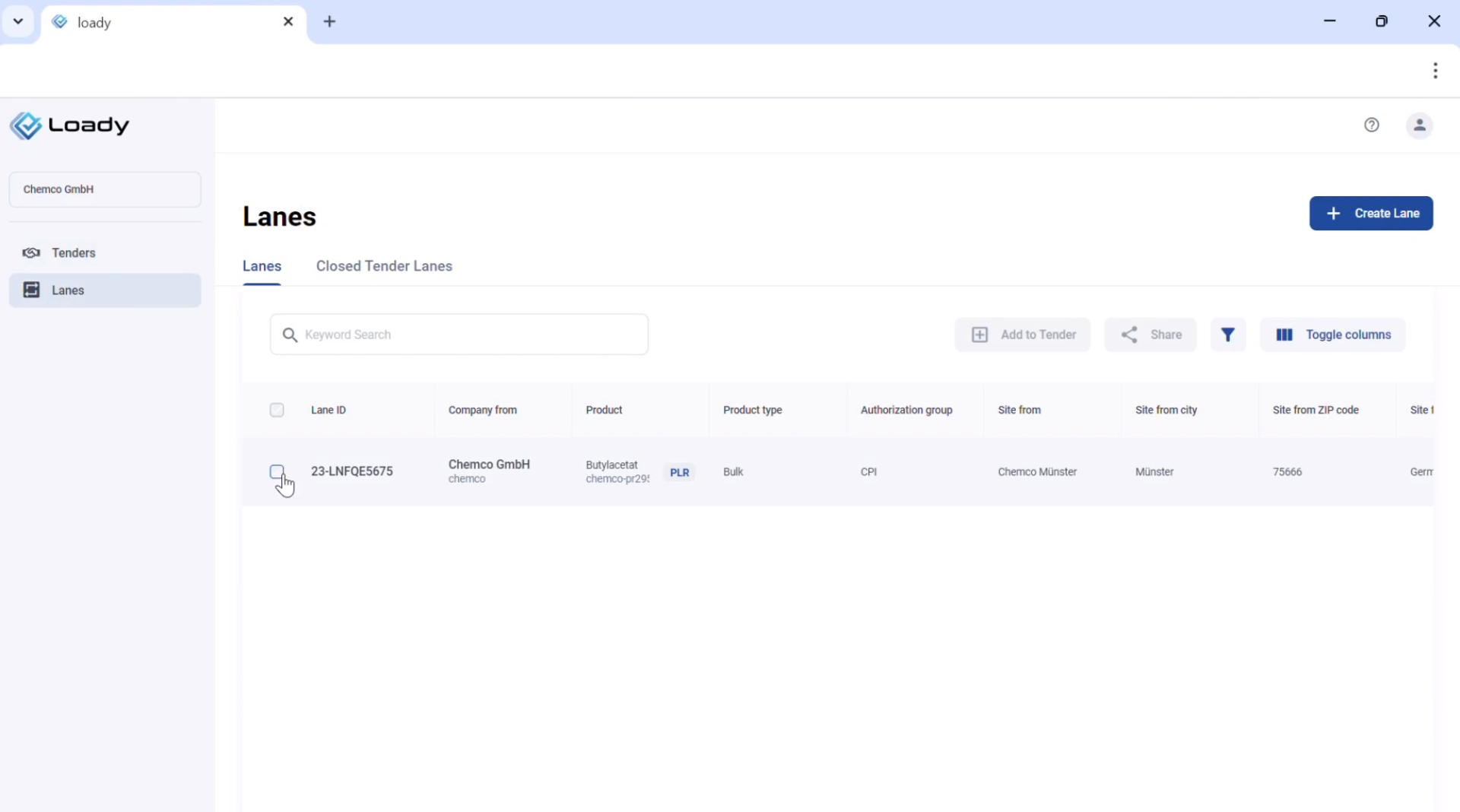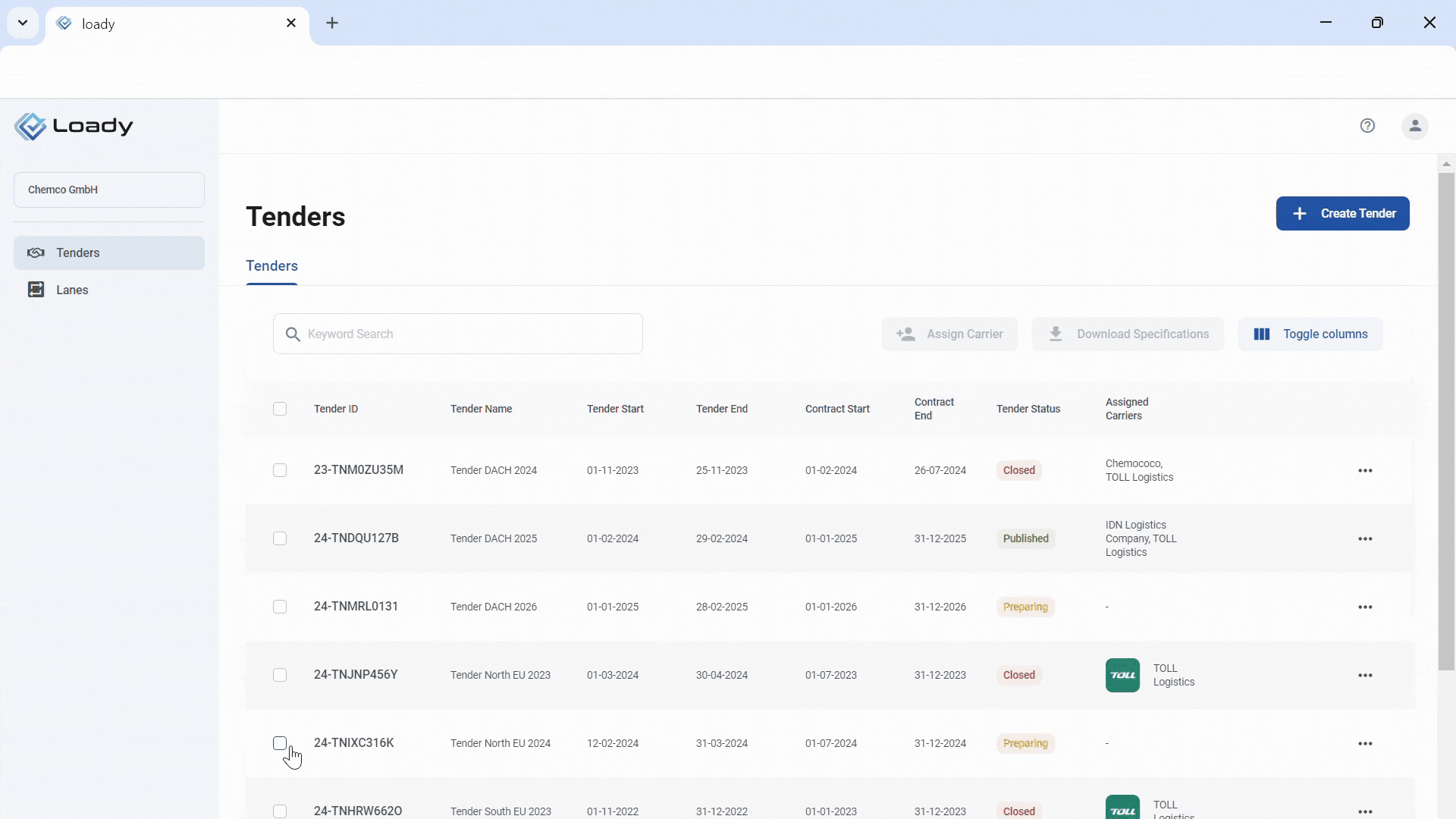Loady4Tender
Get your freight tender specifications with a few clicks.
Structured. Standardized. Always up-to-date.
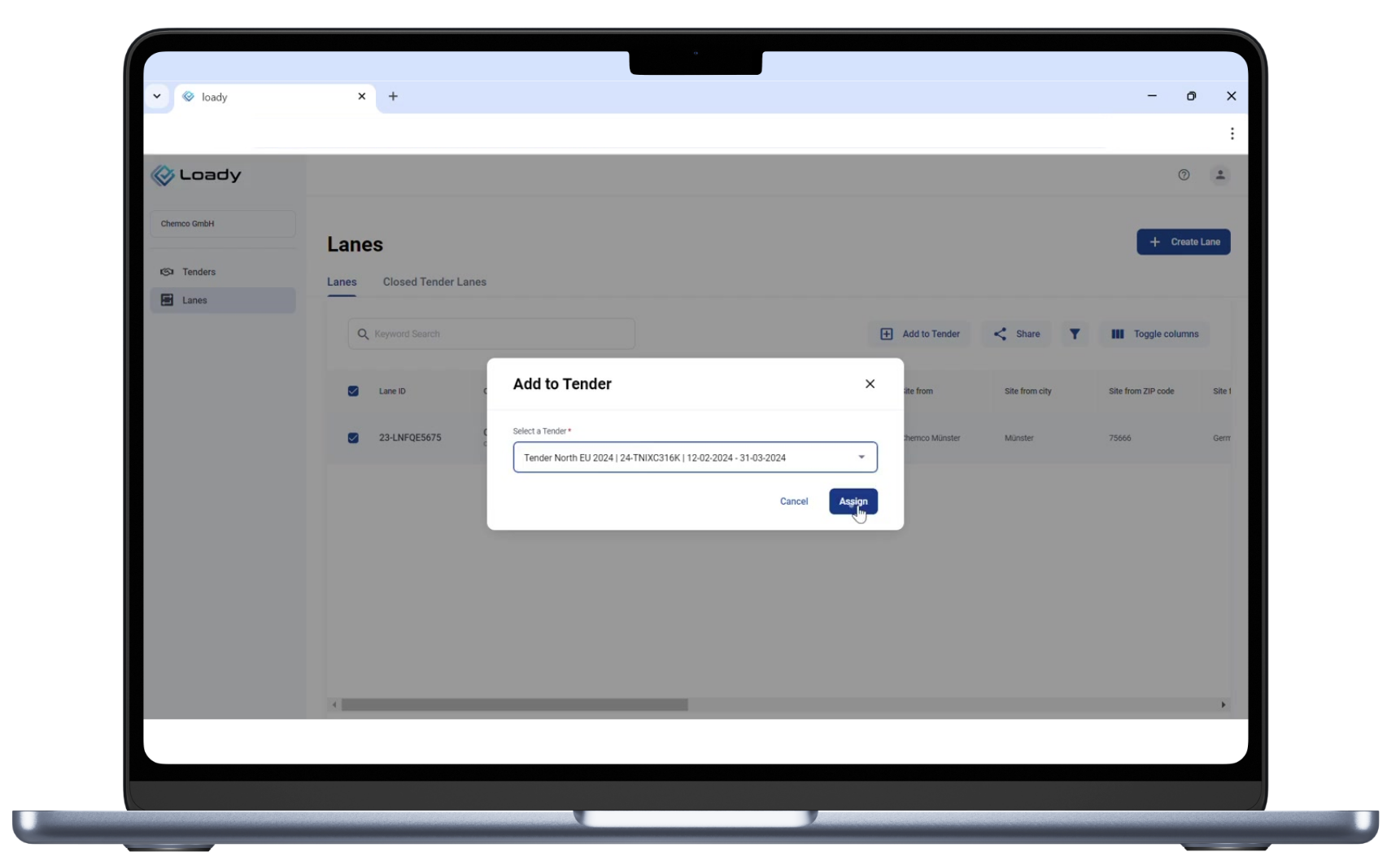
Digitally available tender specifications compatible with any freight procurement solution
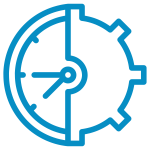
Save efforts, time
and costs
Structured and reliable tender specifications instead of outdated excel sheets.

Minimize data management
efforts
Get reliable first-hand logistics requirements in just a few clicks.
Ensure procurement
efficiency
Improve the quality of freight procurement and avoid contract renegotiations.
Logistics requirements for freight tenders in 3 simple steps
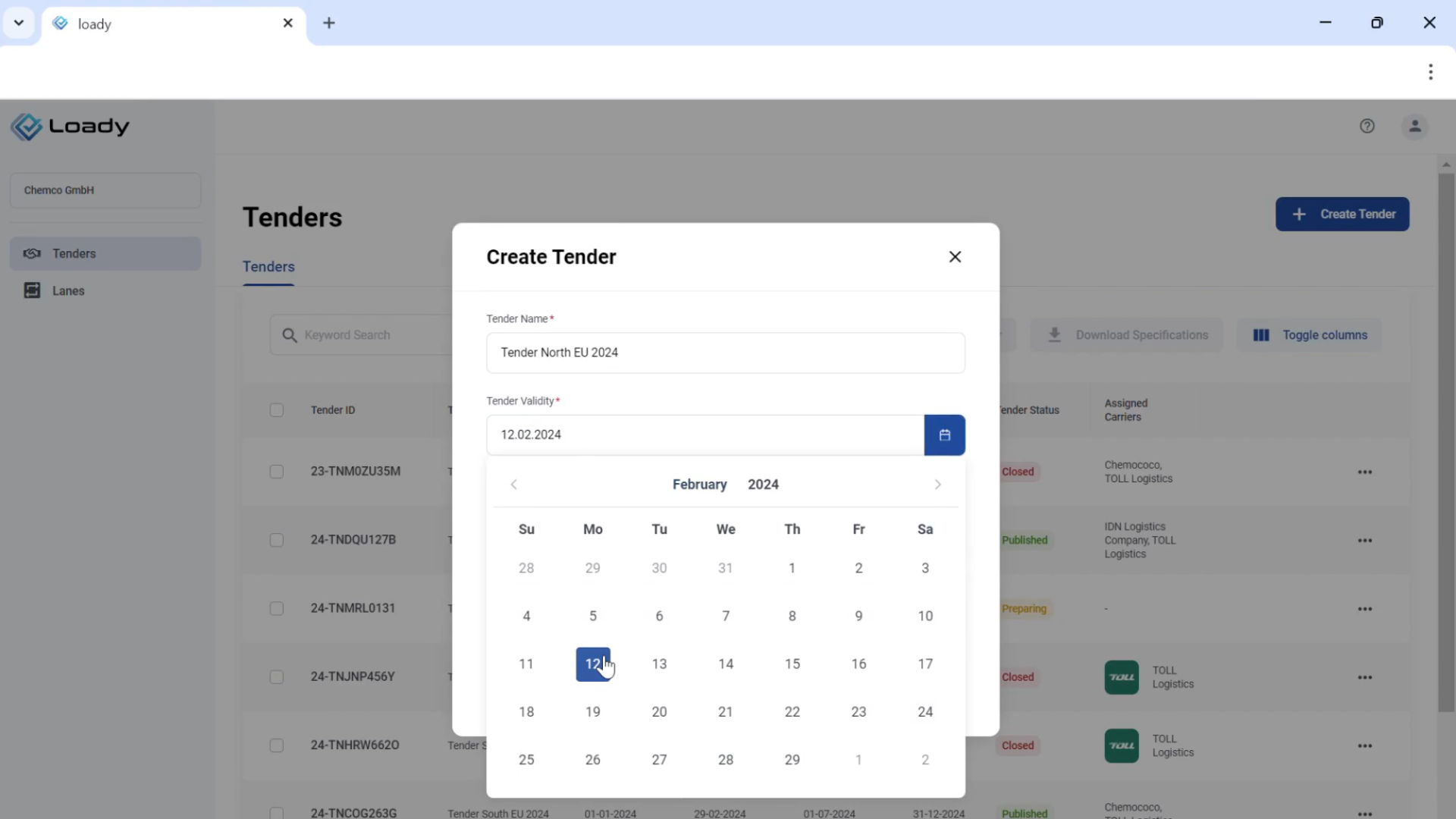
1. Set up your freight tender
Start by creating your tender and bidding period in Loady.
No matter which (freight) procurement platform you run your tender on – Coupa, SAP, Oracle, Transporeon or others – with Loady4Tender you can share updated and digitally processable logistics requirements directly with your logistics service providers.
Note: By using the Loady API, you can manage the entire process directly from your (freight) procurement platform.
2. Select your transport lanes
Select your previously created transport lanes and make all the requirements data available in your tender.
End-to-end transport lanes in Loady contain all requirements that apply to the shipper or goods recipient: technical requirements, important documents such as SDS, on-site savety and security regulations, PPE, procedures at gates, loading and unloading points, etc.
3. Share it with carriers to prepare their quotes
Assign the logistics service partners you want to invite to the freight tender.
Now they are also able to access the corresponding data sets in Loady or download the specifications.
Note: By using the Loady API, you can manage the entire tender process in your freight procurement solution. Carriers can also connect via Loady API, too, to speed up their quoting process.
Benefit: Keep your carriers updated on changes without losing track
Once you have completed the tender in your procurement platform, you can freeze the information in Loady.
This means, you and your partners can rely on the initial conditions, track changes and react to them.
Now, non-awarded carriers no longer have access to the data. Awarded carriers can continue to use their assigned data sets in Loady and integrate with their TMS or other solutions if they are Loady customers.

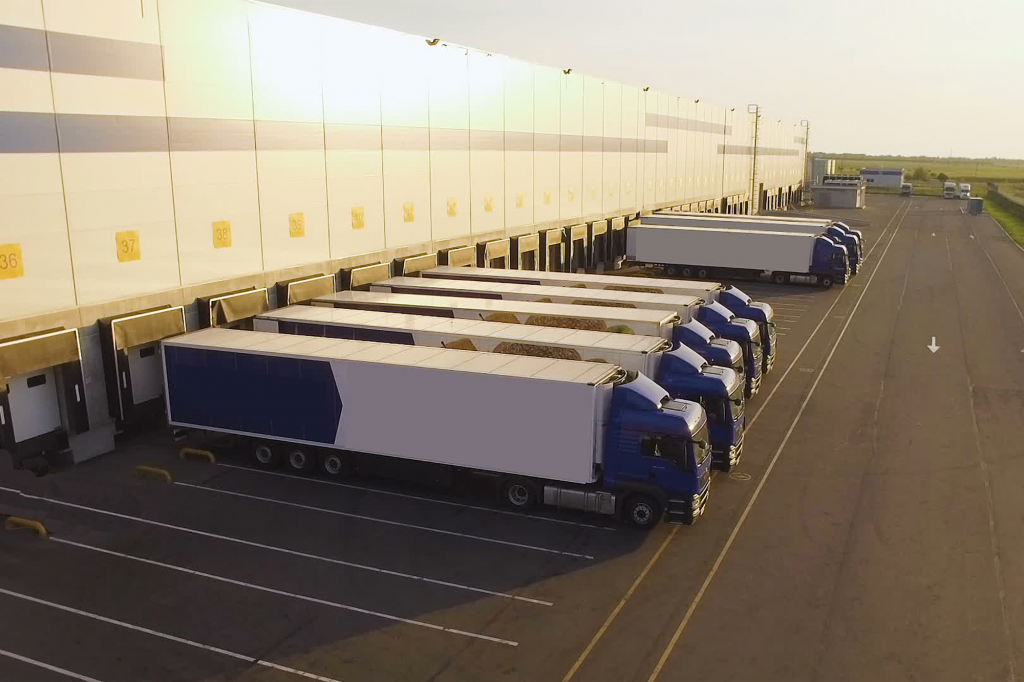
After a tender is before the tender
When your relaunch the tender after a certain period of time, you can duplicate the existing tender, add or delete lanes, and use the updated logistics requirements directly.
Simple, right?

